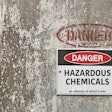
What is suction entrapment?
Entrapment is when a swimmer (most often a child) becomes trapped by the powerful suction forces created by water rushing into the drains at the bottom of pools. A person can be trapped by a part of his or her body, such as limb or hair, or by clothing or jewelry. The force produced at the drain by a pool pump is staggering, as high as 1,800 pounds of hold-down force. Depending upon body position, this can even result in evisceration (disembowelment).
Although considered rare, there have been more than 150 documented cases of suction entrapment since the 1980s.
Legal requirements for Pool and Spa professionals
In 2002, a seven-year-old girl, Virginia Graeme Baker, was trapped by a direct suction force. Despite the efforts to free her, the force was too powerful to prevent her drowning.
Virginia Graeme Baker was the granddaughter of then-Secretary of State James Baker. With the power of his high profile, a law was set in motion that we as pool and spa professionals must follow to help ensure these types of accidents don’t happen again. The law, enacted by Congress and signed by President George W. Bush in December 2007, requires that pool and spa drain covers on all public and commercial pools conform to entrapment standards.
Because suction entrapment drownings most often occur when a drain grate is broken or missing, the law requires pools with a single main drain to have secondary levels of protection. These can be one of the following:
?A safety vacuum release system, which causes the pump to stop operating, and reverses the circulation flow and releases the suction when a blockage occurs.
?A suction limiting vent system, which limits the suction forces and is present with a tamper resistant opening.
?A Gravity Feed Drainage System, which utilizes gravity feed and a collector tank to stop the suction forces at a main drain and eliminate potentially deadly suction forces.
?An automatic pump shutoff system, which uses an automatic system to shut off the pump when suction drain flow is obstructed.
?Drain disablement, which includes any system or device that disables the use of the drain.
While all of these options are valid solutions under the law, only two actually remove direct suction forces from the pool or spa: gravity feed draining systems and drain disablement.
Although drain disablement may be an option for residential installations, public and commercial pools and spas require drains to operate for proper filtration, circulation and dispersion of chemicals. For these reasons, we recommend Gravity Feed Draining systems as the most effective option for stopping main drain entrapment.
Gravity Feed Draining System benefits
The most important benefit of these systems is in the numbers of saved lives. In Florida, we have been required by law to have gravity drainage systems on pools since 1977 and on spas since 1993. Today there are approximately 31,000 pools in Florida with gravity flow systems and there have been no reports of entrapment injuries or deaths with those systems. Conversely, there are approximately 6,000 pools and spas with direct suction systems; of those, there have been six documented deaths. Statistically, Florida’s gravity drain system laws have saved about 31 lives. Florida is the only state to have this requirement.
To test the safety of gravity feed systems and direct suction systems, the United Pool and Spa Association (UPSA) enlisted the University of North Florida to conduct comparison testing.
The findings of the report unequivocally demonstrate the superior safety and efficacy of gravity feed draining systems over direct suction systems. In a direct suction incident, the damage is done in an instant because the forces applied to the trapped swimmer are at full strength immediately. Combined with the need for ongoing maintenance and monitoring that direct suction systems require, and the ease with which other options can be disabled, and only one choice is clear: Gravity Feed Drainage Systems.
How does a Gravity Feed Drainage System work?
These systems work by having a properly sized and located collector tank installed between the pool or spa and the pump. This limits the amount of suction force that can be created when the main drain becomes blocked.
The suction line is connected to a collector tank instead of the main drain. Water flows from the main drain of the pool to the collector tank by gravity force (not via pump). The water then flows from the collector tank to the pump via pump-caused action. This ingenious design allows recirculation of pool and spa water, but eliminates the main drain as the source of suction.
When we at Vak Pak engineer Gravity Feed Drainage Systems, we follow these basic design standards:
?Main drain grate meets ASME/ANSI A112.19.8-2007 standards for drain covers and grates.
?Main drain outlet is connected to a collector tank located between the pool or spa and the pump.
?Main drain sump and grate are sized so that the maximum velocity of the water flow through the grate does not exceed 1.5 feet per second.
?Piping that connects the main drain outlet to the collector tank is sized so the maximum velocity of water flow to the collector tank is not more than three feet per second.
?The capacity of the collector tank must have at least one minute of recirculated flow (a vacuum filter tank can be considered a collector tank).
?Collector tanks have a minimum of 2.25 square feet of water surface area.
To ensure that Gravity Feed Systems are the best and safest options for swimmers and pool professionals, we commissioned a test tank to be built at the University of North Florida to simulate the hydraulics of a pool and spa. We also had the pool and spa set up with both direct suction and gravity flow systems. We wanted to validate our view that gravity feed systems are a safer alternative to the direct suction systems allowed in other markets.
The UNF results showed that a direct suction system results in more than 1,500 lbs. of hold-down forces (which normalized to 6.8 lbs. per square inch) almost immediately upon starting the pumps. Our gravity flow system, however, resulted in only 183 lbs. (normalized to 0.8 lbs. per square inch) of hold-down force and took almost a minute to accomplish those forces.
While this alone is a very significant difference in forces, it doesn’t adequately explain why no one has ever been trapped on a gravity flow system. We couldn’t determine for certain the reasons, but we can hypothesize that there are two reasons this system works so well:
1.There is no immediate force to entrap a swimmer and a seal has to be created to cause entrapment. Even the smallest break in the seal relieves suction forces. This is in direct conflict with direct suction, where a seal isn’t necessary to create incredible suction forces.
2.Because of the very low hold-down forces, even at maximum drawdown, swimmers (children included) can easily break the seal.
Testing the theories
We were aware that the theories for why gravity feed systems work so well are just that: theories. We decided to conduct live tests with a real swimmer on a gravity drainage system.
We ran multiple tests, in different water scenarios and with varying size main drains. Our test subject was an above-average size male (6 feet tall and 240 pounds) and he was unable to create a seal on a 12” x 12” main drain and unable to create an entrapment.
We then created a gasket that reduced the drain area to 10” x 10”. This time, he was able to seal the drain. Once the collector tank system was drawn down, he was able to easily remove himself from the drain. We ran this test with our swimmer on his stomach and back, and he reported that he was easily able remove himself from the drain.
In another instance, we ran the test in a pool of almost three feet of water with a 75 gallon-per-minute drainage system and 12” x 12” main drain. The test subject was having trouble holding himself on the main drain due to his buoyancy. We added 20 pounds of weights so that he could create the main drain seal. As soon as the weights were removed his own buoyancy lifted him off the drain with virtually no forces holding him down.
The requirements in Florida necessitate the large 12” x 12” main drain frame and grate. Since the above-average sized man in our testing was unable to create a seal on the drain grate, it’s almost impossible for a child or smaller adult to be able to create any sort of seal. At that, even if a seal is created, the holds down forces (of .8 pounds per square inch) are low enough that removal from the drain is easy and will not result in physical injury.
Because collector tanks have no power and are operating solely on gravity forces, there is no maintenance or ongoing testing necessary to ensure proper operation. Another benefit to the collector tank/gravity feed system is the design is difficult to tamper with or disable. This is certainly not the case with other mechanical and electric requiring systems. These suction-limiting systems require ongoing maintenance and testing, as well as power systems to ensure proper operation.
Disabling the main drain itself could be an option to prevent drownings, but this isn’t an alternative in most public and commercial pool and spa settings as municipal standards require the ability to disperse chemicals and recirculate water. Drain disablement negatively affects the pool environment and creates dead spots. The only virtually fail safe method to prevent suction entrapment with main drains is through a Gravity Feed Drainage System.
If you would like more information about the testing procedures used to support this article, please visit https://www.vakpak.com/drowning-prevention/entrapment-whitepaper.aspx To read more about the methods used or to view a video on this subject please visit https://www.youtube.com/watch?v=mdS0OAaDkZA
Vak Pak, based in Jacksonville, Fla., has been a leader in the design and manufacture of self-contained filtration and operating systems for swimming pools, spas, splash pads, fountains and zoos for more than 40 years. The company’s pool filtration equipment can be found in hotels, theme parks, residential developments, malls, aquatic centers and backyards across the country.
David Sutherland has been involved in the aquatic equipment industry for over 15 years. He currently serves as the Vice President of Operations at Vak Pak, Inc. a Jacksonville, Florida based manufacturer providing aquatic filtration and recirculation systems and collector tanks worldwide.


































